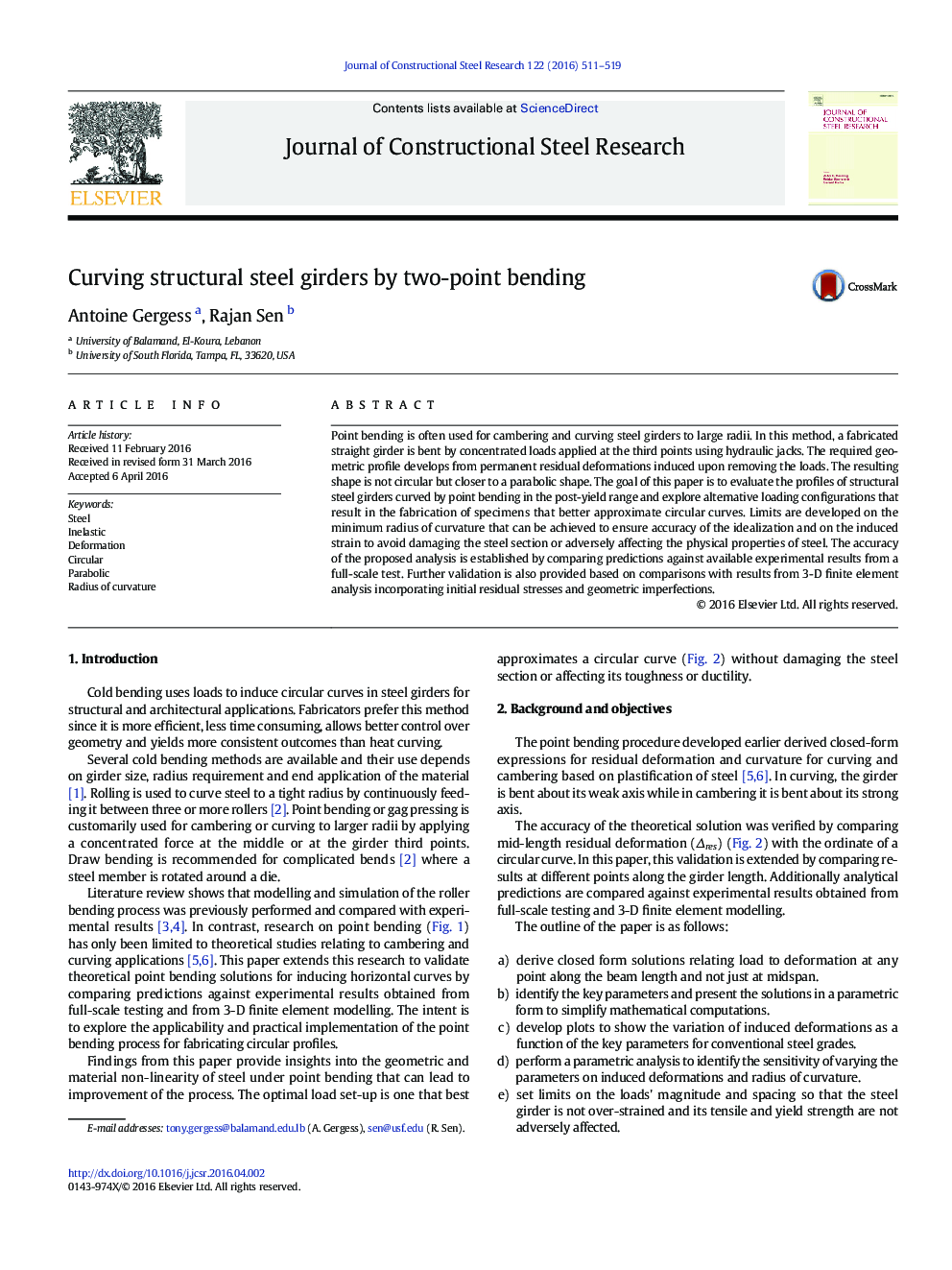| Article ID | Journal | Published Year | Pages | File Type |
|---|---|---|---|---|
| 6751515 | Journal of Constructional Steel Research | 2016 | 9 Pages |
Abstract
Point bending is often used for cambering and curving steel girders to large radii. In this method, a fabricated straight girder is bent by concentrated loads applied at the third points using hydraulic jacks. The required geometric profile develops from permanent residual deformations induced upon removing the loads. The resulting shape is not circular but closer to a parabolic shape. The goal of this paper is to evaluate the profiles of structural steel girders curved by point bending in the post-yield range and explore alternative loading configurations that result in the fabrication of specimens that better approximate circular curves. Limits are developed on the minimum radius of curvature that can be achieved to ensure accuracy of the idealization and on the induced strain to avoid damaging the steel section or adversely affecting the physical properties of steel. The accuracy of the proposed analysis is established by comparing predictions against available experimental results from a full-scale test. Further validation is also provided based on comparisons with results from 3-D finite element analysis incorporating initial residual stresses and geometric imperfections.
Related Topics
Physical Sciences and Engineering
Engineering
Civil and Structural Engineering
Authors
Antoine Gergess, Rajan Sen,
